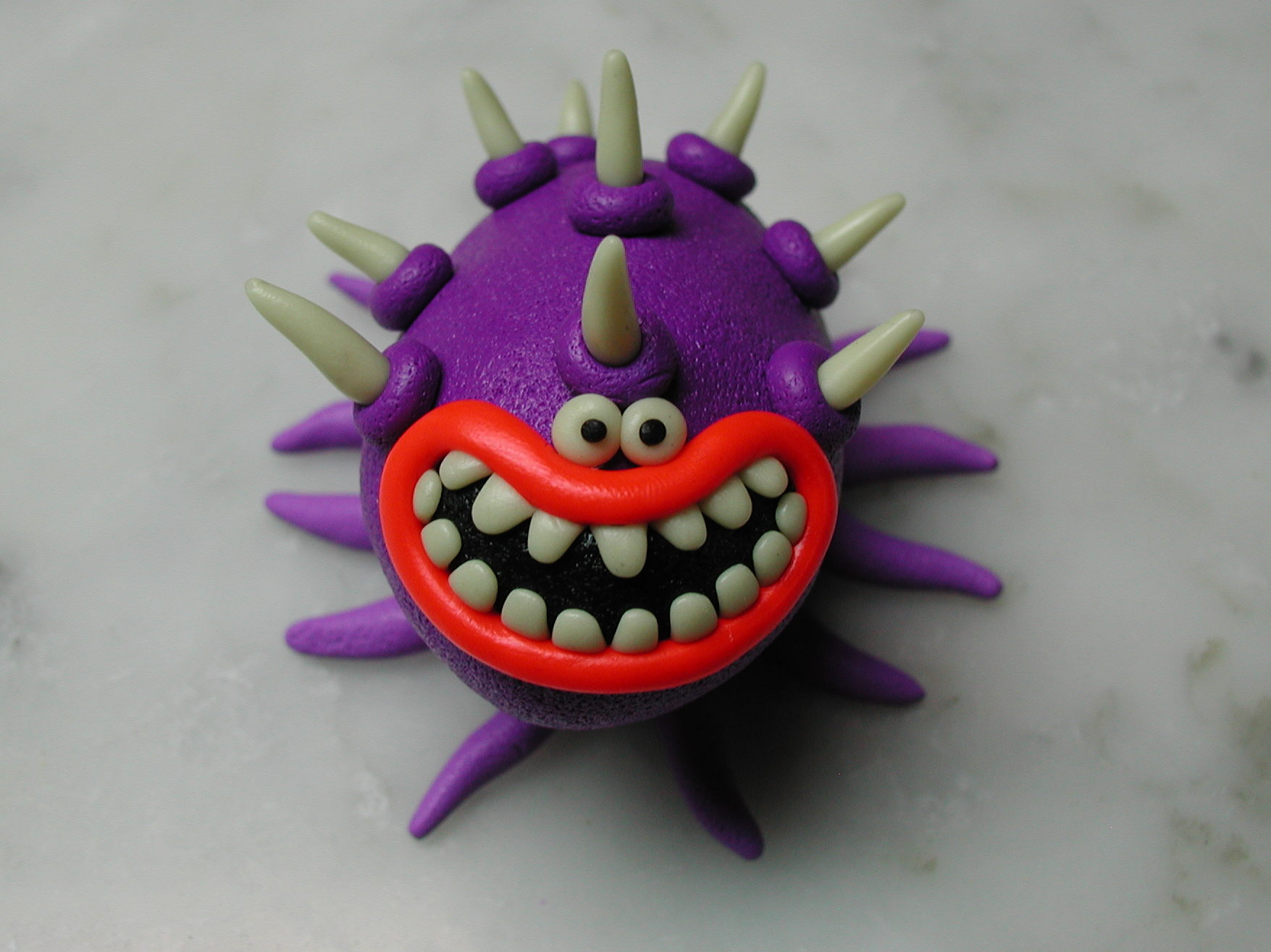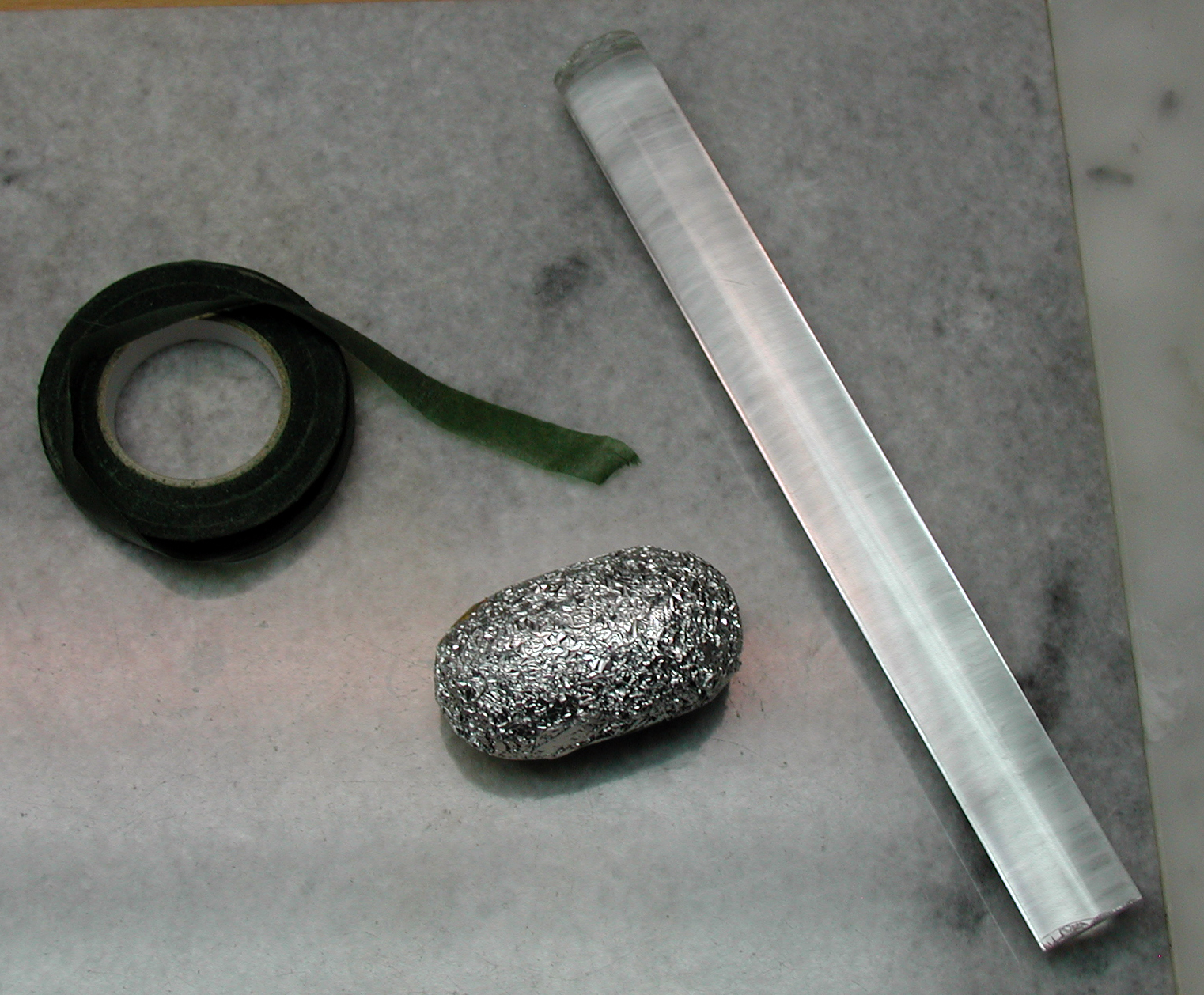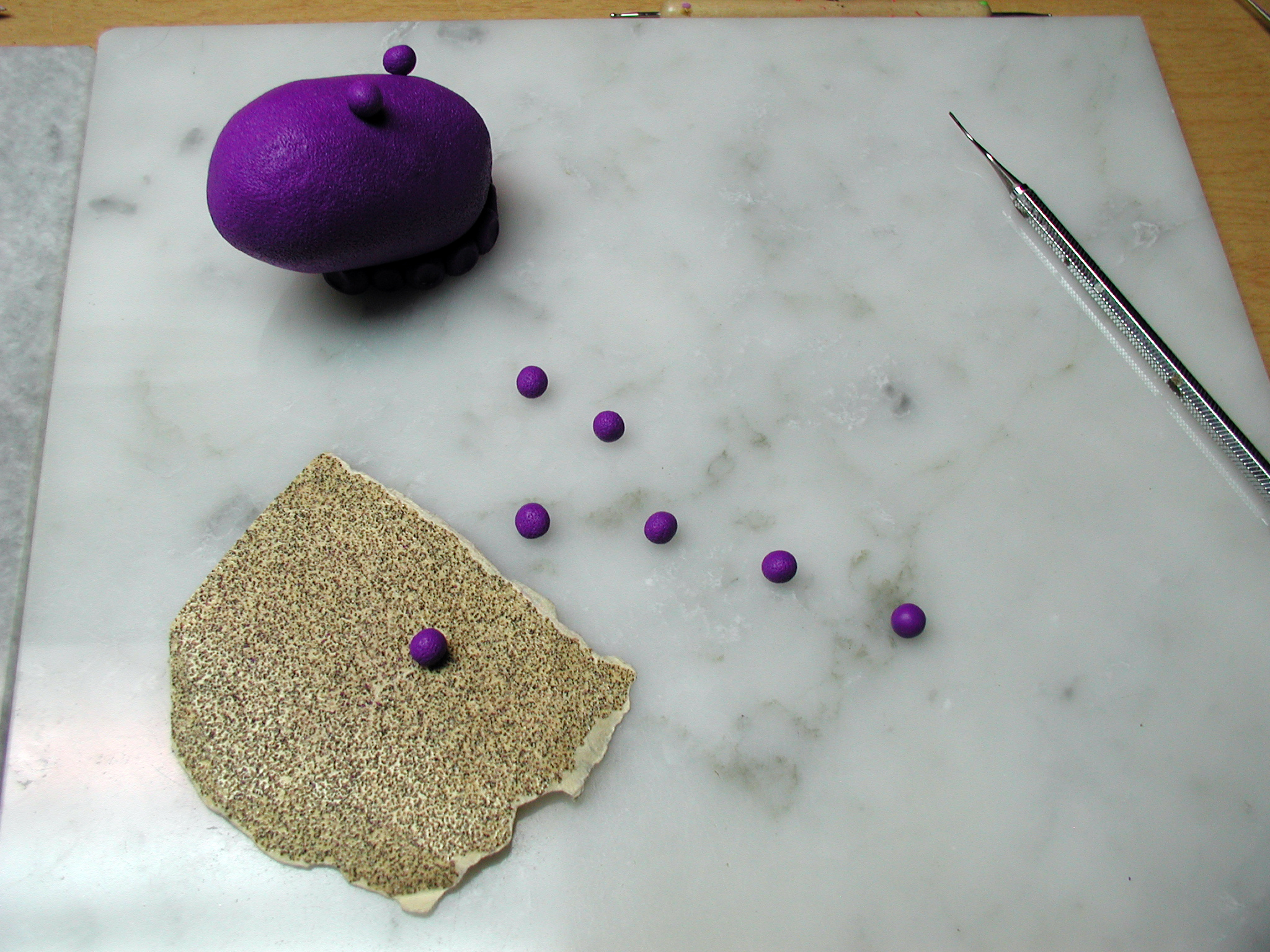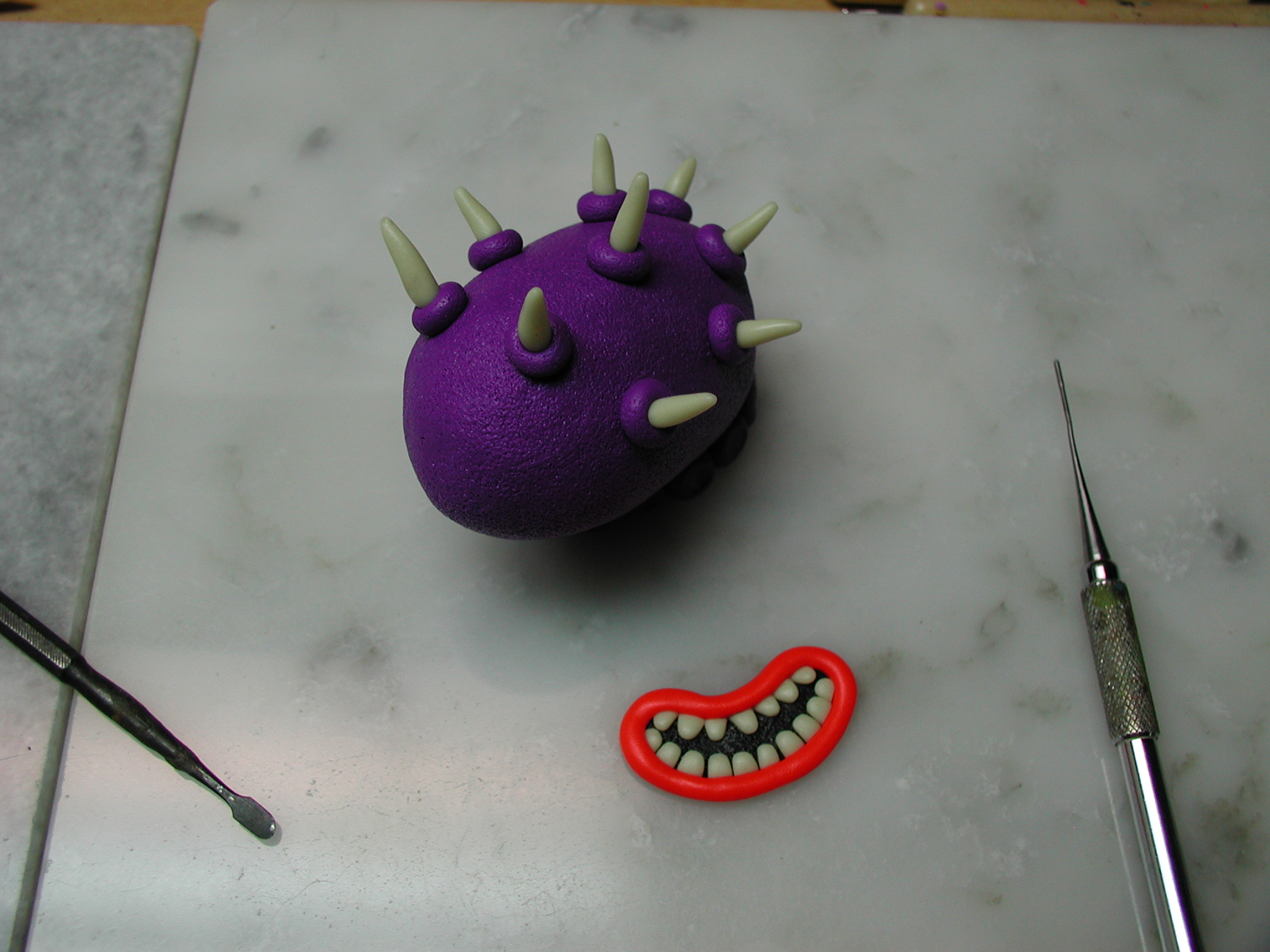So, you feel a need to make creatures. Hopefully the following will assist you in pursuing this ambition. Then again you may come to your senses and pursue a career in accounting or as a cowpoke. Whatever your decision be prepared to accept the consequences.
Here we will focus only on making a “thing” using polymer clay and a few simple tools.

A ThingTools & Materials
Toaster Oven
To get started you won’t need much but you will need a toaster oven that you never intend to cook food in again. Thrift shops frequently have old toaster ovens. Test it there to make sure it works. On the way home pick up an oven thermometer. The dial on that old toaster oven won’t be very accurate and we’ll need to be finicky about temperatures.
You may use your home oven but I’d suggest baking the clay pieces inside a turkey bag or some oven proof container. Over time heated polymer clay releases vapors that will coat the inside of an oven. These oils may release hydrogen chloride gas when the oven is heated for cleaning. Cleaning the oven is bad enough without that.
Work Surface
You’ll want something smooth and hard like a glossy Formica table top or even a polished marble slab. Check Home Depot or a tile shop for marble tiles. They are about one foot square and come in a variety of styles. Get a smooth one without any pits. White is best so you can see what you’re doing. Polymer clay will eat some plastics so best not to use that unless you can test it somehow.
Roller
My roller is a Plexiglas cylinder. It’s hard, very smooth and about an inch and a quarter in diameter. It can be used to roll out thin slabs, to mix colors and to pound the dents out of wads of tinfoil. A thick wooden dowel would also do. Sand it smooth. Again, an inch and a quarter is about the right diameter. Your roller should be about a foot long. I got my plexiglass roller at Tap Plastics.
Pasta Press
It is possible to make thin sheets, condition the clay and blend colors of polymer clay with your roller. But a pasta press makes it way easier. In fact the pasta press is a wonder. It does magical things. Walmart has them for $34.
Polymer Clay
Different brands of polymer clay have different characteristics. Fimo is pretty tough but can be difficult to work with as it takes a good deal of kneading, (conditioning), to make it soft enough. It also tends to be a little translucent. Sculpey is easy to work right out of the package but tends to be brittle and fragile when baked. It is good for simple thick things like grub bodies and fat snakes but makes lousy insect legs. Premo Sculpey seems to be a happy medium between the two. Fairly tough but easy to work. It comes in a jillion colors. You’ll want a good selection of colors but at least have black, white, yellow, blue and red. You can mix just about any color if you have those. A 2 oz. block should cost about $3.00. Here in Portland I get mine at Artist and Craftsman Supply. Michael’s also carries it.
Baking Pan
Non stick is best. Try and get one that fits on the rack holders in the toaster oven. If you are shopping at a thrift store for your toaster oven see if you can find a baking pan that fits while you are there. When I finish a character I put it right into the baking pan. When the pan is full of little creatures I just pop the pan in the oven. Leave room for the oven thermometer.
Aluminum Foil
I use crumpled aluminum foil for the body shapes. Heavy duty foil is best for the larger ones. We will discuss aluminum foil bodies in detail.
Floral Tape (Stem Wrapping Tape)
Raw polymer clay won’t stick to aluminum foil. It just falls off. Wrapping the foil shape with floral tape fixes that as it’s sticky on both sides. Get it at a nursery if possible. The brand Michael’s carries is not sticky enough.
Tiles
You’ll find ceramic tiles very useful. You can make your creature on one and pop it right in the oven without having to carefully pry it off your worksurface. You can use them to roll out clay snakes of an even diameter. Use the smooth side to roll the clay back and forth on your work surface, then either eyeball it or use a ruler to measure even lengths. That’s how teeth are made, and eyes, and suckers, and spines, and pods and just about anything where you need more than one of the same size.
A Flat Thing
Sometimes, actually every time I make a character, I have to gently pry it off my marble tile. I have several tools that are thin and flat that can slip underneath and gently lift the creature free. I bought mine at a jewelry supply house. They are used for working with jewelers wax. They were not expensive. In such places there is usually a bin of metal tools of various sorts for a dollar or two. An artist’s pallet knife would also work. Whatever it is it needs to be flat and very thin.
Rounded Pointy Things
I have a variety of tools that have pointy tips that are rounded off. The thing is when making a mouth for example you don’t want a tool that cuts. You want to push the clay so you get a rounded edge. That looks a lot more natural. I’ve spent actual years gathering my rounded pointy things at flea markets, the dentist and yard sales. As above, jewelers wax working tools work well with polymer clay. Once you’ve worked at making creatures for a bit you’ll know the shapes you want in a tool and will be able to spot them. Dowels can come to your rescue. A dowel about the diameter of a pencil is best. Cut it into several pencil sized lengths. Put the ends into a pencil sharpener and sharpen them to various points. Sand the points to nice rounded points of various sizes. Now you can make nostril holes, belly buttons and other orifices easily.
Sandpaper and Texture Dowels
I like 60 grit sandpaper for adding texture. Texture makes the creatures look much more finished. It hides all the little imperfections. I tear a sheet into pieces and use a different piece for each color. Write the color on the back so you don’t mess up and get red bits on that yellow creature you just spent an hour on. I took some of those dowels with points on them and dipped them in Elmer’s Glue and then into white sand. I use those for getting texture into tight spots like under lips or arms or around warts. Again, one for each color.
Cutting Blades
A sharp pocket knife will do. An Exacto knife is better for precise cuts and trimming. A large craft razor can cut larger pieces without crushing them.
Making a Thing

My goal is to make a smooth shape from aluminum foil. To do this I crumple it as tightly as possible and then use the plexiglass cylinder to pound the surface flat and smooth. Given the method the final shape is somewhat unpredictable but that doesn’t matter as we don’t know what it’s going to be yet. Note the roll of floral tape there.

Here’s the acrylic cylinder used as a roller to make thin slab. The foil shape has been wrapped completely with floral tape. The slab will be the thickness of shish kabob skewers. That’s about right as it will be textured and other bits will be pressed onto it. Here is where a pasta press would come in handy. It would do this part quickly.l

Wrap completely. Use excess to cover bar spots. I use a dull tool to cut off excess so as to not scratch my marble tile work surface.

Wrapping the armature results in overlaps and joints which the roller smoothes out nicely.

No matter how much you go over it with the roller it will always look a little lumpy. Texture saves the day. I use heavy grit sandpaper. It eliminates all the little imperfections that a smooth surface would show.

Since the shape is elongated it’s obvious that it needs lots of short tentacles. Each tentacle needs a base of course. I roll out a snake and cut it into equal sections.

Having cut the sections out I roll them into balls and roll them again on the sandpaper so the texture matches the body.

I use the butt end of one of my tools to push the pod against the body. The texture on each helps weld the pod to the body. At the same time a dimple is left into which I can insert the end of the tentacle. That makes it look like the tentacle is extending out of the pod.

It occurs to me here that the body is too plain. It’s needs glow in the dark spikes. Step one is to make pods for the spikes. Once again little textured balls are necessary.

The spikes are made the same way as the short tentacles. I used glow in the dark clay for the spikes as well as the teeth and eyes. I dread the day I run out. They don’t make it anymore. Note the tools. To the right is the blunt pointy thing. I have no idea what it was for but it’s my favorite. I got it at a flea market. To the left is one of those jeweler’s wax tools. It’s flat and thin and useful for many things. I will use it to pry up that smiley toothy mouth part for example.

To make the teeth I roll out a thin snake and then cut it into even lengths. I roll those out into little rounded rectangles which I press flat and then divide in half. Each half is a tooth. I lay those out on a flat mouth shape slab of black and trim that with red lips. Then I use the flat deal to pry it off the work surface and wrap it around the front of the creature.

Having been distracted by making luminous spines and the face I remember to finish the tentacles. This time I make equal balls then roll them out to a taper on the sandpaper to make short tentacles.

To make the eyes I roll out a careful snake and cut it exactly in half. Roll each half into a ball. Ditto for the pupils. Put the eyeball on the body before placing the pupil. That way it’s easier to see exactly where the pupil should go. The very last thing is to poke a hole in the body to let the heated gases escape when in bakes. Otherwise the surface will blister. That’s it. I use the flat deal to pry it off and put in the baking tin. I still don’t know what it is.
Get a project quote today!
We’ll put together a customized quote about your project and work with you to get started on your project. Let’s build something together!
Leave a Reply
You must be logged in to post a comment.